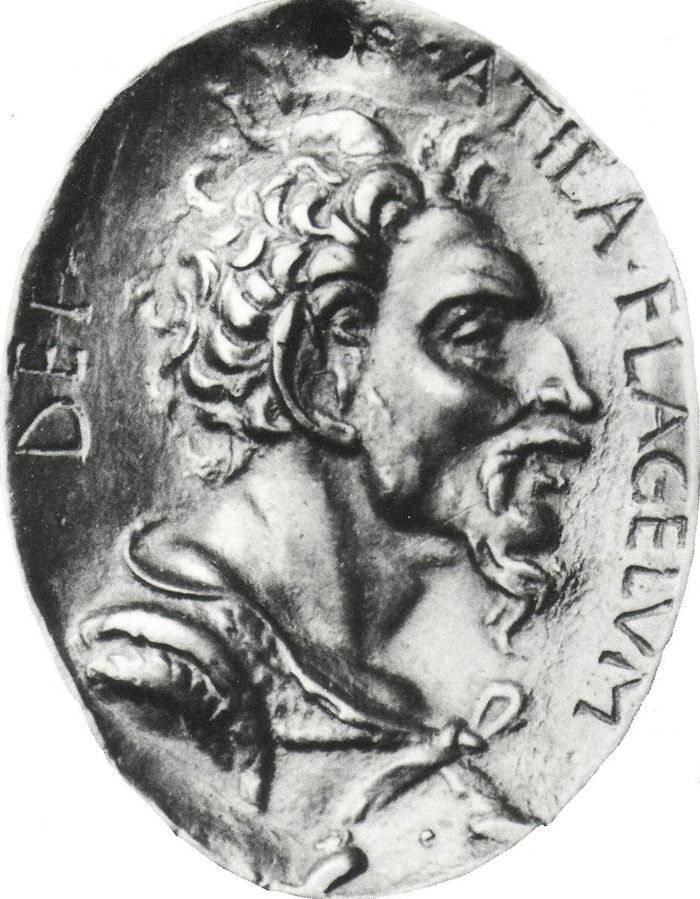Napoleon crossing the Alps: between art and propaganda

Contents
- 1 Two versions of the same historical image that, in reality, never happened. That really is political propaganda
- 2 Napoleon crossing the Alps. First version
- 3
- 4 Napoleon crossing the Alps. Second version
- 5
- 6 Napoleon crossing the Alps. Final version
- 7
- 8 Napoleon crossing the Alps. Version by Paul Delaroche. More realism and more propaganda if possible
Two versions of the same historical image that, in reality, never happened. That really is political propaganda
The painting of the neoclassical artist Jacques-Louis David ‘ Napoleon crossing the Alps ‘ navigates, for the course of History, between art and propaganda, like practically all the paintings referring to kings, dictatorships and leaders of the time and centuries following, when there was no photography or other means that allowed to perpetuate his image for posterity; let there be a witness to how ‘great’ they were.
‘Napoleon crossing the Alps’ is a painting consisting of 5 different versions, for some it is exaggerated, loaded with excessive action, too suspenseful. But, we suppose, it is what Napoleon wanted: an image that spoke of his power, of his prestige, above good, evil and of History itself.
For others it is the beginning of the end of David’s career, before he officially became Napoleon’s artist. Although many call him a lackey. However, what could be said of this Napoleon crossing the Alps is that he is, without a doubt, the most famous portrait of Napoleon Bonaparte ever painted.
Napoleon crossing the Alps. First version
The last version of the painting is said to have been painted in just four months, although the ‘series’ took him to work on canvas from 1801 to 1805.
After a decade of terror and uncertainty following the French Revolution , the country was emerging as a great power once again. At the heart of this resurgence, of course, was General Napoleon Bonaparte who, in 1799, organized an uprising against the revolutionary government, installed himself as First Consul and effectively became the most powerful man in France, to proclaim himself, within a few years later as Emperor.
In May 1800 he led his troops through the Alps in a military campaign against the Austrians that ended in their defeat in June at the Battle of Marengo. It is this achievement that the painting commemorates.
Napoleon crossing the Alps. Second version
Napoleon was not a good model for David to work on executing the painting. Napoleon said something like: ” Nobody knows if the portraits of great men look like them, it is enough that their genius lives there .” David had to work on an earlier portrait and the uniform that Napoleon had worn at the Battle of Marengo.
It was one of David’s sons who, apparently, replaced him. This probably explains the youthful physique of the Emperor figure because he was not that young at the time.
Napoleon crossing the Alps. Final version
Napoleon, however, did help somewhat in the process of making the painting. He was the one who contributed the idea that the portrait was an equestrian portrait: ” calme sur un cheval fougueux ” (calm on a fire horse), were the brief instructions that he offered the artist.
The curious thing is that he did not actually lead his troops through the Alps.
And Jacques-Louis David obeyed. After all, what better way to demonstrate Napoleon’s ability to display his power than that noble and feisty composure.
The most curious thing is that he did not actually lead his troops through the Alps, but followed them a couple of days later.
Like many equestrian portraits, a genre favored by royalty, as we said at the beginning, ‘Napoleon Crossing the Alps’ is more than a portrait of the reflection of his authority. In the final version, Napoleon is presented to us astride an Arab stallion. Before him, to his left, we see a mountain, while in the background, largely obscured by rocks, French troops drag a great canon and, beyond the line, the national tricolor of France flutters in the wind, on a leaden sky that enhances the figure of the protagonist.
Napoleon crossing the Alps. Version by Paul Delaroche. More realism and more propaganda if possible

Some time later, in 1848, a great collector of works of art, specifically the figure of Napoleon, Arthur George, third Earl of Onslow, visited the Louvre Museum in Paris with the painter Paul Delaroche, to whom he commented on the lack of realism and verisimilitude. of David’s painting. He had a moment of inspiration and commissioned Delarouche to produce a more accurate version representing Napoleon on his journey to war. Of course, the picture is different.
In the first place, because it is not at all clear that this trip through the Alps means that he is accompanying his troops. It can represent the days of difference that the cold ‘ diaspora ‘ made. Secondly, because his gesture does not pretend to show the grandiloquence of David’s, nor the arrogance, nor that look of the General who knows how to direct or govern his country and his army.
On a mule, not a beautiful Arabian horse. But Napoleon had died in exile on St. Helena Island twenty years earlier. Had he been alive he would have spat on Arthur George, Paul Delaroche and even the poor mule. Almost sure.
You will be interested in:










